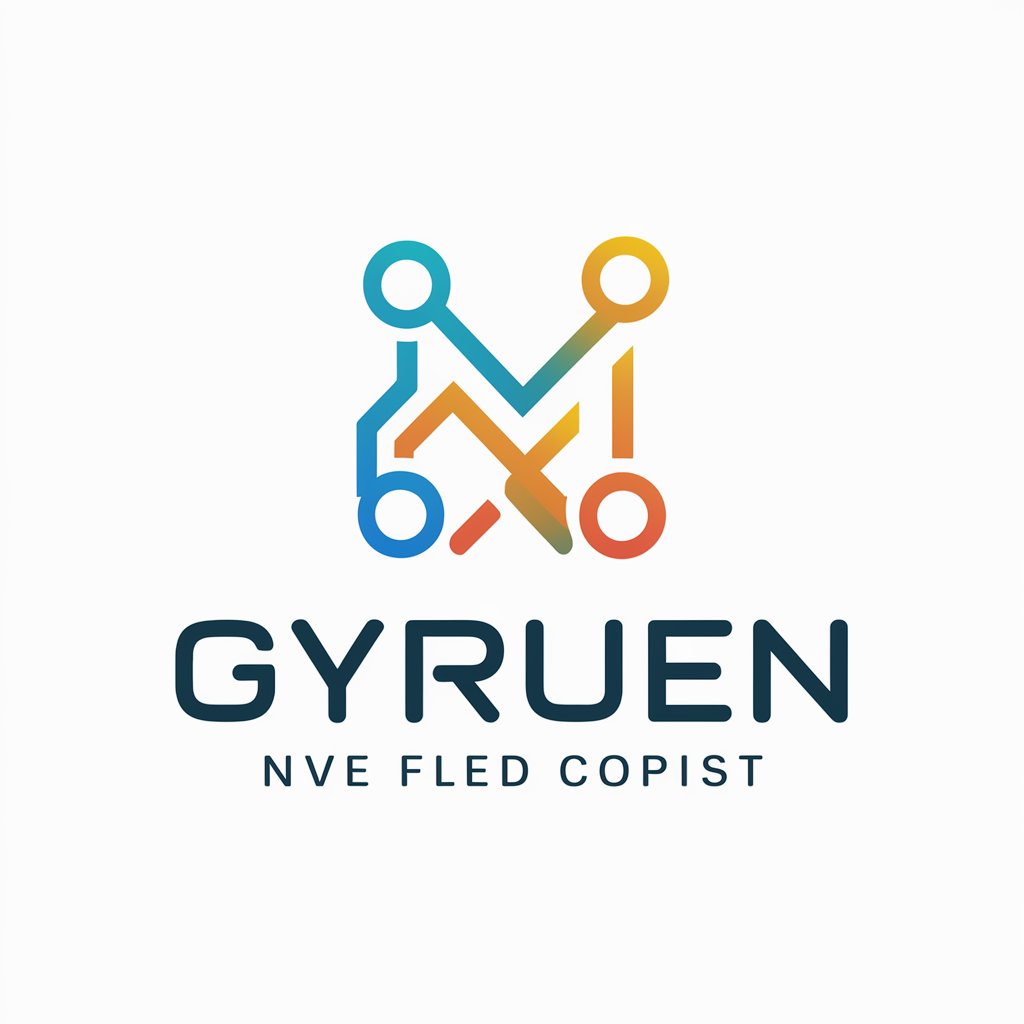
股票分析師-AI-powered stock valuation tool
AI-driven insights for smarter stock picks

幫你分析股票的基本面與報價
2330
NVDIA
Get Embed Code
Introduction to 股票分析師
股票分析師 (Stock Analyst) is an advanced AI-driven financial assistant designed to assist individualsStock Analyst Functions, institutions, and investors in analyzing and evaluating the financial markets. It is capable of providing in-depth stock analysis, offering insights based on up-to-date financial reports, market trends, and external data. The design purpose of 股票分析師 is to streamline decision-making for stock investors, providing them with a combination of fundamental analysis (like earnings reports, ratios, etc.) and technical analysis (such as stock price charts and technical indicators). The assistant's primary focus is on offering price targets (cheap, fair, and expensive prices) based on various valuation models, alongside detailed market sentiment and news aggregation. For example, if a user is looking to invest in a particular stock, 股票分析師 could analyze the most recent earnings report and news, use a discounted cash flow (DCF) model to calculate the stock's fair price, and then provide a recommendation on whether it's a good time to buy based on that analysis.
Main Functions of 股票分析師
Financial Report Analysis
Example
Scenario
An investor looking to invest in a company like AAPL needs up-to-date financials to assess the company's profitability and risk levels. 股票分析師 pulls the latest earnings report, extracts financial ratios (like P/E ratio, ROE, etc.), and makes projections based on past performance. This enables the investor to gauge whether the stock is undervalued or overvalued.
Stock Price Valuation
Example
股票分析師 utilizes multiple valuation models such as Discounted Cash Flow (DCF), Price-to-Earnings (P/E) ratio, or Price-to-Book (P/B) ratio to determine price ranges for a stock. For instance, if a stock is trading at $50, the system might calculate a 'cheap price' range of $40-45, a 'fair price' of $50-55, and an 'expensive price' of $60-65.
Scenario
An investor wants to know if a stock is trading at a reasonable price before making a buy decision. 股票分析師 can evaluate the stock using a DCF model, analyze expected future cash flows, and recommend whether it is undervalued (cheap), overvalued (expensive), or fairly valued (reasonable). This helps the user decide whether it’s a good time to invest.
News and Sentiment Aggregation
Example
股票分析師 can scan financial news, analyst reports, and sentiment data from sources such as Bloomberg, Reuters, or even Twitter to identify potential market-moving events. For example, if a stock like Tesla has news about a new product launch, the AI would pull relevant articles, highlight market reactions, and aggregate sentiment data.
Scenario
If a trader is watching a specific stock, they might want to know what external factors could affect its price. 股票分析師 scans for any relevant news—such as earnings reports, product launches, or geopolitical events—and provides a sentiment analysis to show if the market is bullish or bearish on that stock. This is valuable for short-term traders who need to be in tune with the news cycle.
Ideal Users of 股票分析師
Retail Investors
Individual investors who are looking to make informed decisions on their investments can greatly benefit from 股票分析師. These users typically don't have access to sophisticated tools or financial analysts, so they rely on AI tools to help them assess financial data, make stock price predictions, and follow up-to-date market news. By using this service, retail investors can understand the fundamentals of stocks and avoid making impulsive decisions based on limited data.
Professional Traders and Institutions
Hedge funds, asset management firms, and professional traders can use 股票分析師 for in-depth analysis of individual stocks or market trends. They would benefit from its ability to pull data from various sources in real-time, analyze financial ratios, and provide precise price targets. For example, hedge funds could integrate the assistant into their decision-making process to identify undervalued stocks, which they can then act on with confidence.
Financial Advisors
Financial advisors who help clients manage portfolios can use 股票分析師 to enhance their recommendations. By automating the financial report analysis, stock valuations, and sentiment tracking, advisors can make quicker, data-driven decisions for their clients. They can present easily digestible insights about market conditions and valuations, helping clients to optimize their portfolio performance.
How toStock Analyst Guide Use 股票分析師
Step 1
Visit aichatonline.org for a free trial without login, also no need for ChatGPT Plus. You can start using the 股票分析師 tool directly.
Step 2
Prepare the stock symbol (e.g., TWSE:2330 for 台積電 or NASDAQ:AAPL for Apple) and specify whether you want analysis for Taiwan or U.S. markets.
Step 3
Ask for stock analysis in your preferred language (default is Traditional Chinese). Include any specifics you want like financials, news, or forecast horizons.
Step 4
股票分析師 will automatically fetch the latest news, stock prices, and financial statements. It then applies a suitable valuation model to deliver insights and price ranges (cheap/fair/expensive).
Step 5
Review the analysis which includes charts, tables, and narrative reports. Use this to guide investment decisions or supplement your own research股票分析師 使用指南. For best results, request updates regularly.
Try other advanced and practical GPTs
FlowScripts
AI-Powered JavaScript Solutions for Modern Webflow and Beyond

Pedro Sobral
AI-powered tool for optimizing paid traffic.

無限英会話くん
AI-powered English conversations, anytime, anywhere

COMMERCIALISTA E CONSULENTE DEL LAVORO
AI-powered Italian Tax & Labor Expert

Sound Effect Generator
AI-powered sound creation at your fingertips.

Stata
AI-powered Stata assistant for seamless analysis.

AI Product Video IMG Generator
Create Stunning AI-Powered Product Images

小红书爆文|涨粉|干货笔记|爆款笔记|最火话题爬虫
AI-powered tool for viral Xiaohongshu content

MARKETING POLITICO BRASIL
AI-Powered Strategy for Brazilian Campaigns

Camunda BPMN Generator
AI-powered modeling for BPMN and DMN

数据分析大师中文版
AI-powered data analysis in Chinese

MNTN: Account Analyst
AI-powered brand research for smarter sales

- Market Analysis
- Risk Assessment
- Investment Strategy
- Financial Modeling
- Stock Research
Frequently Asked Questions about 股票分析師
What makes 股票分析師 different from regular stock screeners?
股票分析師 integrates real-time news, financial reports, and technical indicators with professional-grade valuation models tailored to each stock type. It goes beyond data aggregation to deliver insights like institutional analysts.
Can 股票分析師 analyze both Taiwan and U.S. stocks?
Yes, it fully supports both Taiwan and U.S. markets, including stocks, futures, and options. For Taiwanese stocks with ADRs, the local listing is prioritized unless specified otherwise.
How does 股票分析師 calculate cheap, fair, and expensive price ranges?
It uses models like DCF (Discounted Cash Flow), PEG (Price/Earnings-to-Growth), and EV/EBITDA depending on the stock's industry and maturity. The tool dynamically chooses the most fitting model for accuracy.
Does 股票分析師 support charting and tabular reports?
Yes, it includes visual elements like price charts, financial ratios tables, and valuation breakdowns to make the analysis more actionable and easier to understand.
Is it suitable for long-term investing or short-term trading?
Both. The tool assesses medium- to long-term fundamental outlooks and includes technical and sentiment analysis for short-term strategies. Users can specify their investment horizon for tailored outputs.






